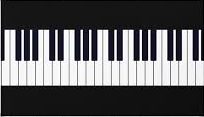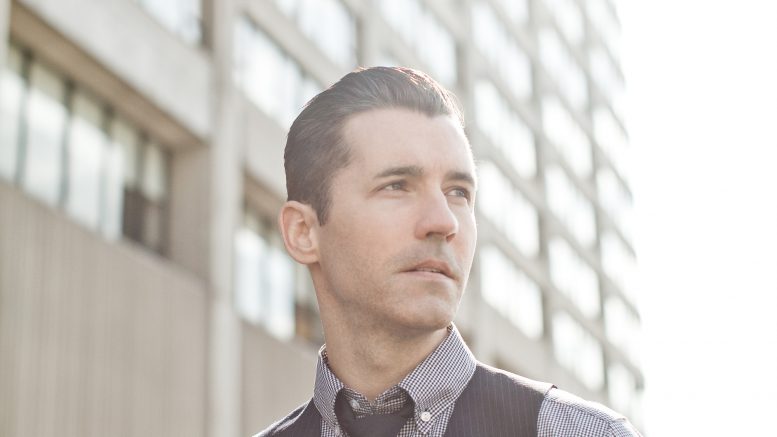Story by Nick Krewen | February 6, 2014
For SOCAN Words and Music
The day “Rick ‘n’ roll” gave way to rock ‘n’ roll will go down in history as another notch in the belt of independent Canadian songwriters.
After torturing its future listeners – maybe “torturing” is too strong a word, so let’s go with “teasing” – with seven days of 24-hours-a-day airings of British singer Rick Astley’s 1987 pop smash “Never Gonna Give You Up” ad nauseum, new Toronto radio station Indie88 finally whelped itself into existence with Arcade Fire’s “Ready To Start” on July 31.
With its noon launch on the 88.1 FM radio dial, Indie88 marked a new chapter for Canadian independent tunesmiths, a touch of fresh air in this less-than-a-penny-rate-per-spin era of emerging new media platforms.
“Our condition of licence is at 40 percent Canadian content, of which 60 percent must be emerging artists,” explains Indie88 program director Adam Thompson, who cites Hannah Georgas, Dan Mangan and Toronto band Pup as early station listener favourites.
“So there’s unlimited potential. We don’t put conditions on what we play or what we don’t play. It’s basically, do the work, play the shows, cut through and you have a home here.”

Royal Wood
Since Canadian songwriters have been earning an average of roughly $1.35 per play on the station (as of the August 2013 SOCAN distribution) , it serves as a reminder that in an age where innovative, digitally-driven technological models are being ushered in with uncertain compensation models for music creators, the performance royalties generated by radio airplay still stand as a significant, reliable source of income.
And while most self-contained recording artists would give anything for mainstream radio airplay, the reality is that there are at least a few radio champions of independent music in Canada.
“You can kind of ballpark it, but sometimes there’s a huge spike because some radio station spun the hell out of it.” — Royal Wood
Domestically, for songs ranging from one minute to seven, Canadian indie songwriters can rely on: campus and community stations (a SOCAN survey rate of $4.60 per spin, but only reflecting the survey period, which can last from three to 14 days annually, depending on the license fee of the station); commercial radio formats (the BDS or Broadcast Data Systems-monitored rate of $1.35 per spin); and CBC Radio 2, which has a reach of 2.1 million listeners and pays an average $27.50 per airing. These rates were calculated for SOCAN’s August 2013 distribution, and change slightly with each quarterly distribution.
Songwriters receive SOCAN performance royalty cheques four times a year, and the income generated for Canadian indie musicians is often significant, but can vary widely in size.
“I’ve never counted performance income as income I can rely on, because you never have any way of truly knowing what it’s going to be,” says JUNO-nominated, Toronto-based singer and songwriter Royal Wood from a tour stop in Switzerland.
Wood, whose music is played regularly on CBC Radio 2, and campus and community stations, cites the ebb and flow of career activity as a reality affecting royalty generation, which ebbs and flows in turn.
“You can kind of ballpark it,” he says, “but sometimes there’s a huge spike because some radio station spun the hell out of it, and somebody used your song again in multiple countries. So there’s always that question of ‘What if?’ I don’t always pay my mortgage as much with my SOCAN royalty income; I put that back into my career.”
Of course, in a group situation with more than one songwriter, the royalties have to be split between the co-writing band members, notes ex-Two Hours Traffic singer-songwriter Liam Corcoran.
“It’s substantial at times, but I certainly wouldn’t be able to make a living off of what we’re getting,” says Corcoran, who started the ECMA Award-winning Charlottetown, P.E.I. power-pop quartet a dozen years ago before their split in October 2013.
“For us, it was part of a band, as we weren’t really writing for someone else. There have been some very nice cheques coming in [from SOCAN], that are very helpful, and we look forward to getting them, but it’s not really anything we can rest on at this point.”
Like Wood, and surely many of his other domestic peers and contemporaries, Corcoran calls CBC Radio airplay essential for survival.
“If you write songs and you’re in Canada, the CBC keeps people going,” says Corcoran, who plans to continue to perform and record as Express with his cousin Kinley Dowling.
“If you play a show that they record, you get paid very well. Everything you do, you get compensated very well. A few of us had side projects, and with even just a few spins, you see it show up on the printout and it’s a surprise – you don’t expect it. They pay for everything they broadcast so Thank God for them – it would have been very hard to keep things moving without the CBC.”
Kai Black, CBC Radio 2’s Executive Producer, says his organization’s playlists rely heavily on independent artists.
“There are tons of music genres on our network, so with 50 percent Canadian content, you can bet that independent music is going to be important,” says Black. “Because, at the end of the day, once you look at what the major labels might release that we might play, there’s still lots of opportunity.”
“It would have been very hard to keep things moving without the CBC.” — Liam Corcoran
A glance at a CBC Radio 2 playlist at press time, in October 2013, revealed a number of independent artists – Arcade Fire, Matt Epp (with Serena Ryder), City and Colour and Joel Plaskett – receiving repeat airplay two or three times a day. And Black says CBC Radio 2’s playlist was recently reduced to 21 songs, 10 international, 11 Canadian.
“We shortened the number because we wanted to get songs in front of people more often,” he explains. “Recently, research has shown that you need to play a song five or six times before audience members decide if they like it. The songs in our current rotation will probably stay two or three months.”
How does one get on that playlist? Black says after they’ve scoured the DMDS (a music industry digital delivery system for new songs), iTunes and any relevant blogs, his music programming team of Julian Tuck and Jeannette Cabral join him for bi-weekly music meetings to determine what will be added or dropped from the playlist.
“We listen to songs in their entirety and have a criteria sheet that evaluates each of the songs, so we’re not just subjective,” says Black. “Technically, does it sound good? Does the performer have an interesting voice? Will it polarize some people because it’s so unique? Is there a good, discernible hook? Does it have the classic verse-chorus construction? And, most importantly, is this a song that Canadians, once they hear it, are going to want to hear again?’”
Independent music is also “crazy, crazy important” to campus and community radio, declares Shelley Robinson, executive director of the Ottawa-based National Campus and Community Radio Association, which counts 42 English-language licensed and online campus radio stations among its members.
Although the SOCAN survey rate was $4.60 per spin for the August 2013 distribution , Robinson says the music itself is integral. “It’s local culture, local voices, stuff you’re not going to hear anywhere else,” she says. “It’s the backbone of our sector.”
Indie radio royalties reward songwriters – SOCAN Words and Music

